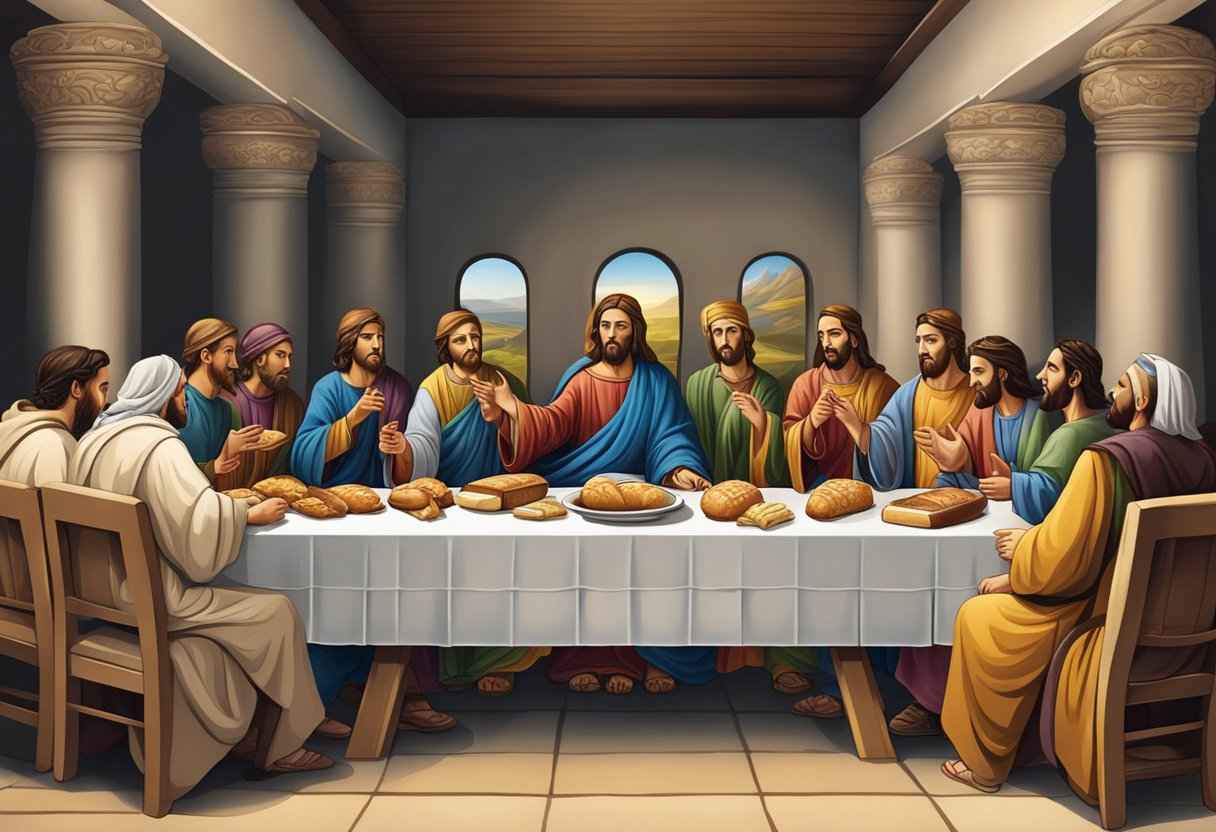The doctrine of the Trinity is central to Christian theology, yet the word “Trinity” never appears in the Bible. This has led some to question whether the Trinity is genuinely a biblical doctrine. However, even though the technical term is not used, a substantial biblical case can be made for the existence of the Trinity.
By examining key Scripture passages, we can see how the Bible points to God existing as three persons – Father, Son, and Holy Spirit – in one divine nature.
Old Testament Hints of Plurality in God
While the Old Testament does not explicitly lay out the doctrine of the Trinity, it contains hints that God exists as more than one person.
God Speaking in Plural Form
In the very first chapter of Genesis, God says,
“Let us make man in our image, after our likeness” (Genesis 1:26).
This use of plurals – “us” and “our” – suggests multiplicity within the one God.
The Divine Name Elohim
The most common Hebrew word for God in the Old Testament is Elohim. Significantly, Elohim is plural, indicating more than one.
While this plural name does not prove the Trinity, it allows for the Trinity as a possibility.
The Angel of the Lord
There are instances in the Old Testament when the “angel of the Lord” seems to be God Himself rather than a created angel (Genesis 16:7-13, Exodus 3:2-6).
This has led some to see the angel of the Lord as the pre-incarnate Christ, a hint at distinction within the one God.
New Testament Affirmations of the Trinity
The hints at plurality within the Godhead in the Old Testament become more explicit teachings in the New Testament.
While the technical formulation took centuries to develop historically, the foundation is clearly laid in the New Testament.
Jesus’ Claim to Divinity
Jesus claimed unity with God the Father and used divine names and attributes for Himself (John 10:30, 8:58).
The divinity of Christ is a clear indication that more than one person exists within the nature of the one God.
The Great Commission
In Matthew 28:19 Jesus commands baptism
“in the name of the Father and of the Son and of the Holy Spirit.”
The three divine persons are linked together as equals, affirming their unity within the Godhead.
Paul’s Trinitarian Blessings
Several times Paul includes the blessing of all three members of the Trinity in his letters, praying for
“the grace of the Lord Jesus Christ and the love of God and the fellowship of the Holy Spirit”
(2 Corinthians 13:14, see also 1 Corinthians 12:4-6 and Ephesians 4:4-6).
Distinct Roles of the Persons
Throughout the New Testament, the three divine persons are shown conversing with each other, demonstrating personal distinction within the Godhead (Matthew 3:16-17, John 14:16-17, Romans 8:26-27).
Also Read: 6 Best Documentaries About the Bible
Core Components of the Biblical Trinity
While the technical details were debated in later centuries, these core components of the Trinity emerge from Scripture:
- There is only one God
- The Father, Son, and Spirit are each fully God
- The Father, Son, and Spirit are distinct persons from each other
This biblical data led the early church to summarize the Trinity as one God existing in three co-equal, co-eternal persons. The doctrine was developed to account for the full revelation of Scripture.
Key Bible Passages on the Trinity
Several Bible passages explicitly mention all three members of the Trinity together. Here are some of the most significant:
- Matthew 3:16-17 – Jesus’ baptism, where the Spirit descends on Him and the Father speaks from heaven
- Matthew 28:19 – The Great Commission, commanding baptism in the name of the Father, Son, and Spirit
- Luke 3:21-22 – Another account of Jesus’ baptism and the Trinity together
- John 14:15-17 – Jesus’ promise to send the Spirit from the Father
- Romans 8:26-27 – The Spirit interceding on our behalf with the Father
- 2 Corinthians 13:14 – Paul’s apostolic blessing invoking the Trinity
- 1 Peter 1:1-2 – Peter’s greeting mentioning all three persons
The doctrine of the Trinity, while not explicit on the surface, has substantial biblical evidence when we dig deeper into Scripture.
The three divine persons – Father, Son, and Spirit – are shown acting in unity as the one God.
Historical Development of Trinitarian Language
While the seeds of the doctrine of the Trinity are present in Scripture, the technical philosophical language was refined over several centuries in the life of the church. Here is a brief overview:
- 2nd Century – Early church fathers like Justin Martyr and Irenaeus began to use triadic language to describe God.
- 3rd Century – Tertullian was the first to use the term “Trinity” and emphasized the distinctions between the persons.
- 4th Century – The Council of Nicaea affirmed Christ’s full divinity against the Arian heresy which denied it.
- 5th Century – Augustine elaborated on the aspects of the Trinity in his spiritual classic On the Trinity.
So while the word “Trinity” came into use later, early theologians were already grasping towards the doctrine implicit in Scripture.
Heresies Concerning the Trinity
Several heresies challenged orthodox views of the Trinity throughout church history. Some of the major ones include:
- Modalism – Denying distinction between the persons, claiming they are just modes or manifestations of the one God.
- Arianism – Denying the full divinity of Christ and claiming He was created.
- Tritheism – Holding that the three persons are fully separate Gods.
- Subordinationism – Claiming the Son and Spirit are subordinate to the Father in essence and divinity.
The church recognized that these views undermined fundamental aspects of the biblical doctrine of the Trinity.
The Importance of the Trinity
Some wonder whether it really matters whether someone fully understands or believes the Trinity. Here are some reasons the doctrine is profoundly important:
- It’s clearly taught in Scripture, so we should embrace it.
- It helps explain biblical passages about God’s nature and actions.
- It undergirds key doctrines like the atonement, incarnation, and salvation.
- Errors like modalism undermine God’s personal intimacy with His people.
- Belief in the Trinity is a benchmark of orthodoxy in the Christian faith.
While mysterious, the triune nature of God is worthy of reverent study and belief.
Practical Implications of Believing in the Trinity
How does this doctrine impact how we live as followers of Christ? Here are some key implications:
- We worship God in three persons, not limiting ourselves to just Jesus or the Father.
- We pray to and commune with all members of the Trinity.
- We are baptized into the shared life of the Father, Son, and Spirit.
- We experience new life because of the combined action of the Trinity.
- We rely on the continued ministry and empowering of the Holy Spirit.
- We model the self-giving love and community of the divine persons.
May this overview encourage us to worship God in His triune majesty!
Summary: Where in the Bible Does it Talk About the Trinity?
The Bible does not use the technical term “Trinity” to describe God.
However, throughout the Bible, God is presented as one divine being consisting of three equal, co-eternal persons – the Father, the Son Jesus Christ, and the Holy Spirit.
The Old Testament hints at God’s complex unity through the plural word “Elohim” and passages where God refers to Himself in the plural.
The New Testament more clearly reveals the interactions between the Father, Jesus, and the Holy Spirit, showing their unity and distinction. Jesus’ baptism scene displays all three persons together.
Key Bible verses that demonstrate the Trinity include Jesus’ Great Commission, Paul’s apostolic blessings, and Jesus’ promise to send the Spirit.
The Trinity is a complex concept, but is considered a crucial doctrine because it is taught in Scripture and helps make sense of many Bible passages. The doctrine took centuries to fully formulate but is rooted in God’s Word.
While the technical details require deeper study, the overall concept of the Trinity emerges from careful reading of the Bible.
God has chosen to reveal Himself as one divine being eternally existing in three persons. This guides our worship and affects how we live as Christians.



















